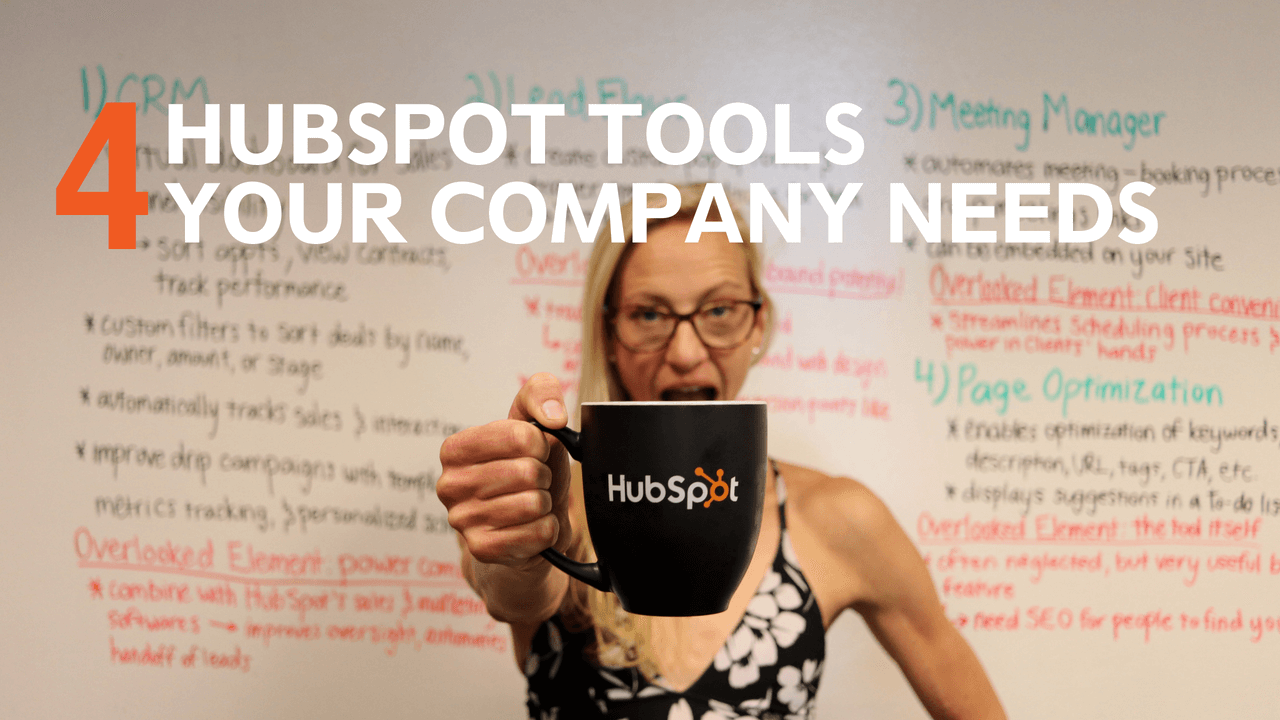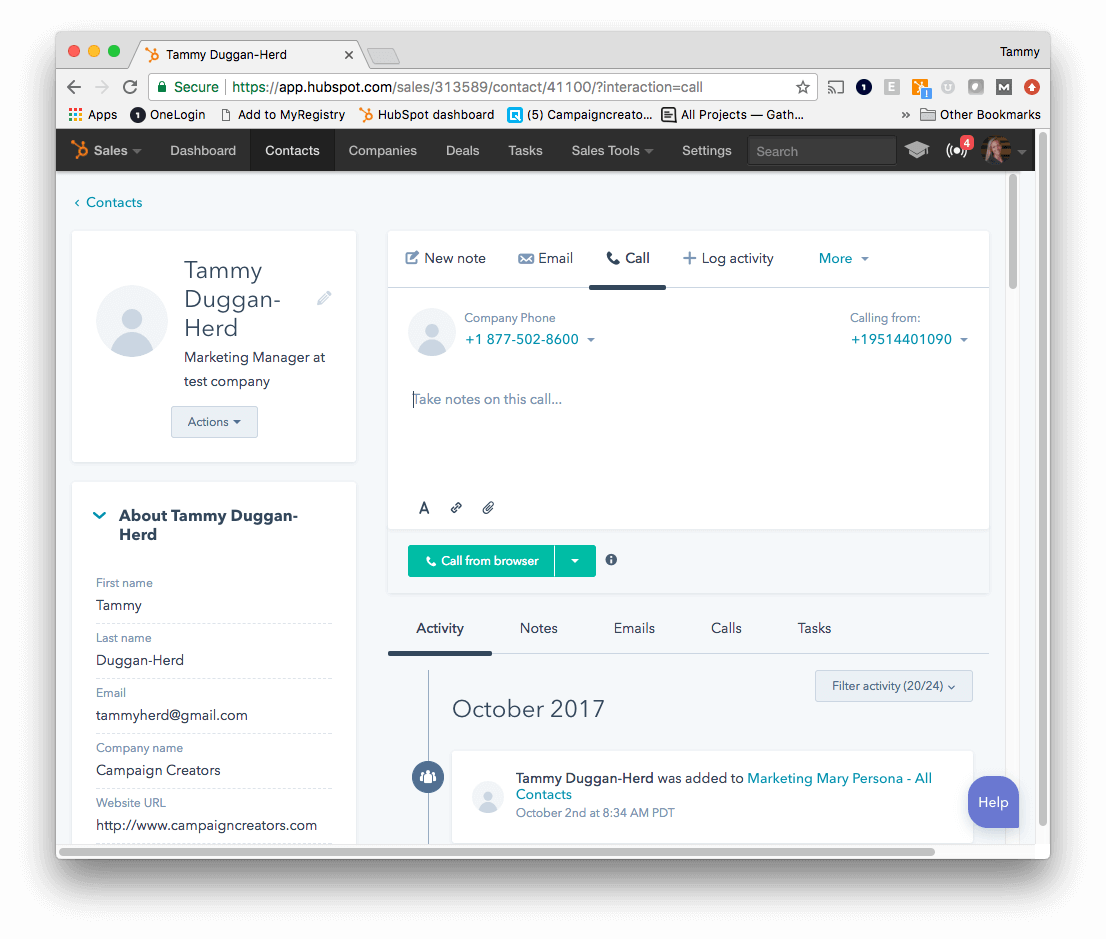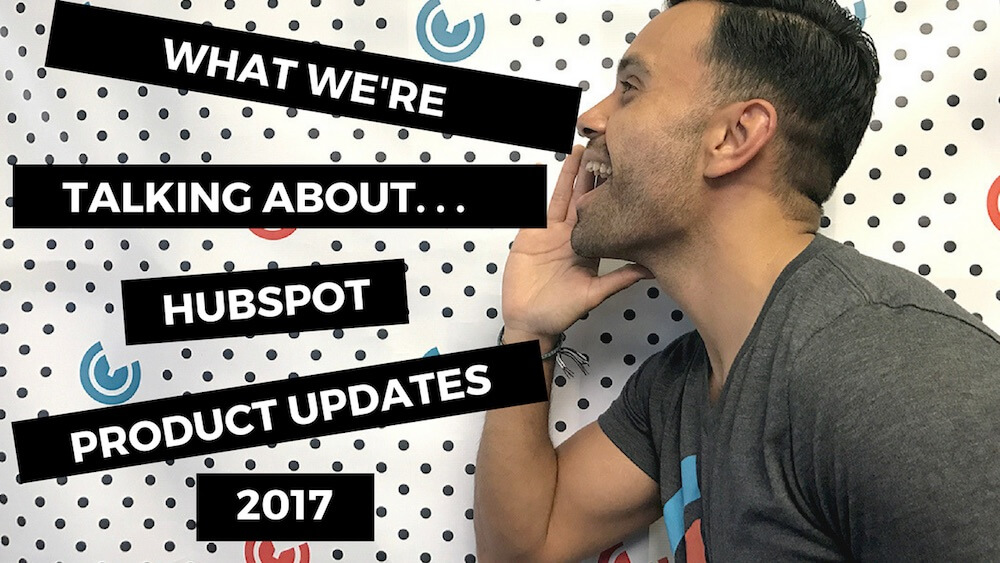How to Integrate Facebook Lead Ads with Your MAS
Hi guys, welcome to Episode 3 of Nick’s Ad Chat where we are discussing all things PPC.
I know what I am looking for, and would like to chat.
A team of data-driven marketers obsessed with generating revenue for our clients.
Because the proof is in the pudding.
At Campaign Creators we live by three principles: Autonomy, Mastery, Purpose.
3 min read
![]() Tammy Duggan-Herd
:
08/07/17
Tammy Duggan-Herd
:
08/07/17

With a full toolkit of software to choose from, HubSpot is no doubt an invaluable resource for any company's sales and marketing teams. Both their free and paid tools are user-friendly, but they come equipped with a number of features that can take some time to learn to use to their full potential.
Today, we're going to highlight some of the features of the platform and the elements of those features that most often go under-used, to help you make the most of your HubSpot experience.
HubSpot’s Customer Relationship Management software is, in the eyes of our CMO Nicole, the best free CRM on the market. It's packed with elements that can help manage a wide range of processes in your company. One great asset is a virtual dashboard for visibility of your sales funnel, letting you sort scheduled appointments, view set contracts, and track performance against quotas customizable quotas.
The CRM also sorts deals by name, owner, amount, or stage with custom filters. Customer interactions and sales activity are tracked automatically. Thorough information on your leads can be stored with this tool; calls, emails, meetings, and notes are all kept alongside the more basic contact information. You can also improve your drip campaign with email template creation and metrics tracking as well as personalized email schedules.
HubSpot’s CRM is not only compatible, but a lot more potent when combined with the platform's Sales and Marketing softwares. Unlike the CRM itself, these are paid if you want to access their full versions-- personally, we find it’s worth the cost, as they exemplify the phase “greater than the sum of their parts.”
Sales can sync with the CRM to improve oversight of your entire sales pipeline, and Marketing can use it to automate the handoff of leads to sales. If you’re using all 3, the CRM is really the marketing loop-closing glue that holds everything together.
Lead Flows allow you to create custom pop-up forms for your pages. The process includes selecting a flow type (like drop-down banners and pop-up boxes), adding an image along with color and text, adding in form questions, and choosing when and where your pop-up will display. Added form fields sync back to your HubSpot contact properties and become available for list segmentation.
This tool also gives you the freedom to trigger specific conditions for the pop-ups to display; for example, when a lead has scrolled halfway through a certain page or has spent a certain amount of time on the page.
Yes, we know these are traditionally made for outbound campaigns; but with inventive design and good timing, they can be optimized for an inbound marketing strategy. Lead Flows is a useful supplement for your traditional HubSpot forms when it comes to micro-conversion points, like blog subscriptions.
Meetings is an amazingly useful part of HubSpot Sales Pro, because it automates the meeting-booking process in your calendar for both you and your team. The calendar can sync conveniently with your Google or Office 365 calendar.
Meetings offers group meeting links allow prospects to book time with multiple members of your team, and a “round robin” meeting link makes it possible to book with the sales rep whose schedule best fits the meeting time.
Meeting links can additionally be embedded on your site! Prospects have access to your calendar, saving you time on sending emails back and forth trying to find a time both parties are free. The usefulness of this capability cannot be stressed enough.
With “contact us” links on your site that lead to phone numbers, or bottom-of-the-funnel offers like consultations that lead to a game of scheduling ping pong over email, you run the risk of inconveniencing your leads to the point where they don't follow through.
The meeting manager allows you to streamline the process instead, and put the power in your clients' hands by having these kinds of contact links take them immediately to the meeting scheduler!
As is the case with many HubSpot products, features are enhanced when you coordinate several tools at once. An example of this is the great final feature of the meetings tool-- the creation of records automatically through HubSpot Sales in the HubSpot CRM when a client book meetings.
The on-page SEO optimizer in HubSpot Marketing is an extremely handy and often neglected built-in feature. Available on any HubSpot website page or landing page, it enables optimization of keywords, your page title, the meta description and URL, heading tags, your call-to-action, images, internal links, and the content of the page itself.
The optimizer displays suggestions in the form of a to-do list, telling you how many of your keywords are being used in other elements of the page, whether internal links have been included in the body, etc. HubSpot offers guidelines on how to make all of these SEO-compatible on their website.
With these features in mind, you are on your way to becoming a professional HubSpot user!
Looking for more help with the platform? You can leave the technological heavy lifting to the pros with our HubSpot technical set-up and hands-on training packages.

Hi guys, welcome to Episode 3 of Nick’s Ad Chat where we are discussing all things PPC.

It's well known in the inbound marketing world that HubSpot offers some of the most powerful marketing, CRM, and sales platforms. Their software...

Every year HubSpotters excitedly anticipate the Product Announcement that takes place at Inbound, HubSpot's annual conference in Boston. Lucky for...